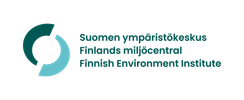Baltic Sea winter monitoring cruise: phosphate content reaches record levels
The annual winter monitoring cruise of the marine research vessel Aranda revealed that the oxygen problems of the main basin of the Baltic Sea continue and that phosphate levels in the surface layer have increased. The oxygen situation in the Gulf of Finland was relatively good, but the phosphate level in the surface layer was higher than at any time in the past 30 years. Nutrient levels were also higher than usual in the Archipelago Sea.
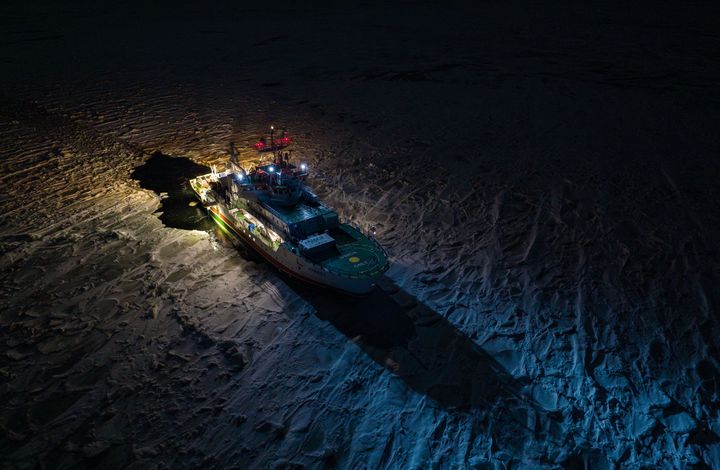
Salinity in the surface layer of the Gulf of Finland had risen to record heights and at most measuring points phosphate levels were the highest ever recorded. Record-high phosphate levels were now measured in a significantly wider area than last year. The rising phosphate level is caused by nutrient-rich masses of water flowing into the Gulf of Finland and mixing there. However, the mixing of water layers improves the oxygen situation in deeper water, and low oxygen levels were found only in the western end of the Gulf of Finland.
Levels of dissolved nitrogen and phosphorus measured in parts of the Archipelago Sea set new wintertime records. The likely cause of the exceptionally high concentrations was nutrient-rich water flowing from the Gulf of Finland into the Archipelago Sea.
Oxygen levels in deeper parts of the Bothnian Sea have decreased and nutrient levels of the deep water are high in places. Nutrient levels began to rise at the start of this century and the process continues.
Oxygen and nutrient levels in Kvarken and the Bothnian Bay were at the normal wintertime levels.
The oxygen situation in the main basin of the Baltic Sea remained poor. The northwestern part of the main basin was powerfully stratified and water more than 60 metres beneath the surface was without oxygen. At the northeastern edge of the basin oxygen-free water was found only at depths below 90–95 metres. The phosphate level in the surface layer was higher than usual for wintertime. The likely cause of this was the mixing of masses of water caused by storms.
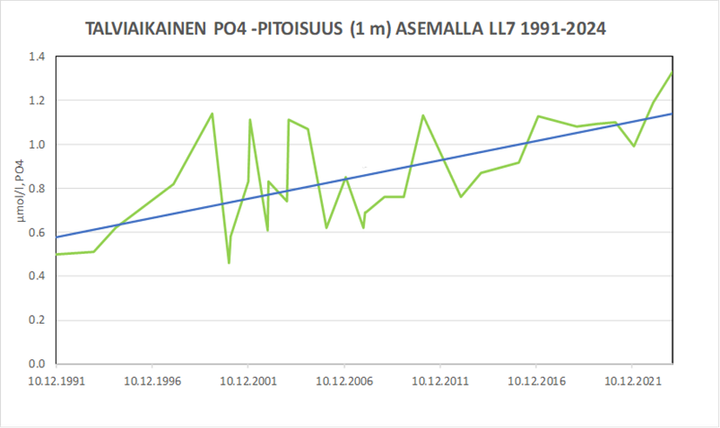

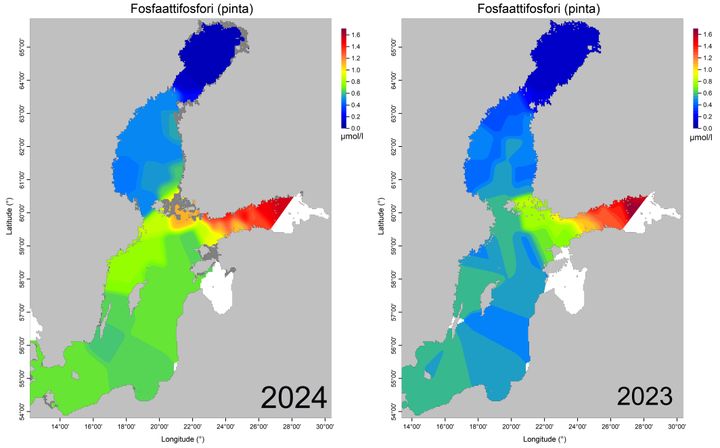
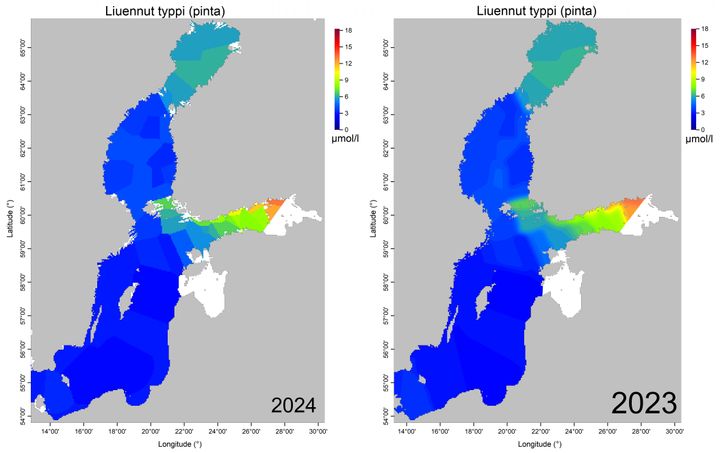
Effects of December saltwater inflow expected to be mild
An influx of saltwater entered the Baltic Sea through the Straits of Denmark in December 2023, improving the oxygen situation in deep water off the island of Bornholm. The December saltwater inflow was moderate, with a volume of about 80 km3. Its effects were significantly weaker than those of the inflow that occurred in 2014, with a volume of 300 km3. The effects of the saltwater inflow will probably be seen in the northern part of the main basin of the Baltic Sea in the late spring or early summer.
Aranda also monitors noise and harmful substances
Aranda’s winter monitoring cruise extended to the Gulf of Finland, the Archipelago Sea, the northern part of the main basin of the Baltic Sea, the Åland Sea, the Bothnian Sea, Kvarken, and the Bothnian Bay. In addition to levels of nutrients and oxygen, information was collected on matters such as hazardous chemicals and underwater noise.
Noise monitoring showed an increase in low-frequency noise in the Gulf of Finland and in the northern part of the main basin of the Baltic Sea. Low-frequency noise inflicts stress on fish and shellfish, for example, and disturbs organisms that use sound in communication and catching prey.
In monitoring for harmful substances, very little oil was found in surface water. Oil levels have remained below the threshold level of 1 microgramme per litre of water. More fluorine compounds used as coating materials accumulate at the bottom of central parts of the Bothnian Sea than at other observation points in Finnish parts of the Baltic Sea. In the eastern Gulf of Finland more polychlorinated dioxins and furans accumulate at the bottom than in other areas.
Aranda will embark on its next monitoring cruise on April 16. The progress of spring blooms of phytoplankton will be examined during the cruise.
Keywords
Contacts
The state of the Archipelago Sea, Bothnian Bay and main basin of the Baltic Sea:
Senior Researcher, Cruise Leader Pekka Kotilainen, tel. +358 295 251 317, firstname.lastname@syke.fi
The state of the Gulf of Finland, harmful chemicals, underwater noise: Leading Researcher, Cruise Leader Harri Kankaanpää, Finnish Environment Institute, tel. +358 295 251 258, firstname.lastname@syke.fi
Communication specialist Eija Järvinen, Finnish Environment Institute, tel. +358 295 251 242, firstname.lastname@syke.fi
Media service at Finnish Environment Institute
Our Media Service provides information on research, helps journalists find experts for interviews and provides photos for media use.
Our Communication experts will answer your inquiries on weekdays from 9 am to 4 pm.
Images
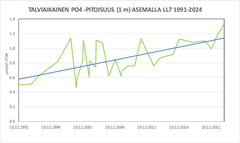

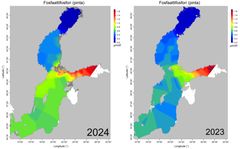
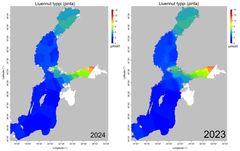
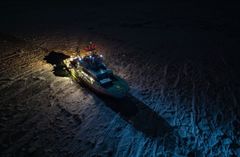
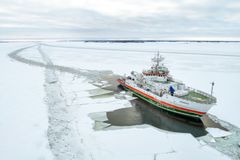
Finnish Environment Institute - We build hope through research.
Finnish Environment Institute
Latokartanonkaari 11
00790 Helsinki
+358 295 251 000
It is time to move beyond solving environmental problems one by one, to systemic sustainability transformations. The Finnish Environment Institute (Syke) contributes to building a sustainable society through research, information and services. The Finnish Environment Institute is a research institute with 700 experts and researchers located in Helsinki, Oulu, Jyväskylä and Joensuu.

Subscribe to releases from Suomen ympäristökeskus
Subscribe to all the latest releases from Suomen ympäristökeskus by registering your e-mail address below. You can unsubscribe at any time.
Latest releases from Suomen ympäristökeskus
Relatively small amount of blue-green algae have been observed in inland waters, but there are plenty of observations on the coast and in the open sea25.7.2024 13:17:22 EEST | Press release
The blue-green algae situation has remained stable in inland waters, and slightly less blue-green algae than in previous monitoring years have been observed. Blue-green algae observations have increased on the coasts, and plenty of observations have also been made in the Bothnian Sea and the Åland Sea.
För tidpunkten har ganska lite cyanobakterier observerats i insjöarna, men vid kusten och på öppet hav finns det rikligt med observationer25.7.2024 13:06:55 EEST | Tiedote
Algläget har hållits stabilt i insjöarna och cyanobakterier har observerats något mindre än genomsnittet för tidpunkten under tidigare uppföljningsår. Observationerna av cyanobakterier har ökat vid kusten och rikligt med observationer har också gjorts i Bottenhavet och Ålands hav.
Ajankohtaan nähden sinilevää on havaittu sisävesillä melko vähän, mutta rannikolla ja avomerellä havaintoja on runsaasti25.7.2024 13:00:00 EEST | Tiedote
Sinilevätilanne on pysynyt sisävesillä vakaana, ja sinilevää on havaittu ajankohtaan nähden hieman keskimääräistä vähemmän kuin aikaisempina seurantavuosina. Sinilevähavainnot ovat lisääntyneet rannikoilla, ja havaintoja on tehty runsaasti myös Selkämerellä ja Ahvenanmerellä.
Blue-green algae observations have increased in coastal and open sea areas18.7.2024 13:18:58 EEST | Press release
Blue-green algae observations have increased in coastal and open sea areas, but the situation in inland waters is typical of the season. Blue-green algae have been observed especially on the coasts of Southwest Finland, Uusimaa and Kymenlaakso. Abundant blue-green algae occur in the open sea area throughout the Gulf of Finland.
Observationerna av cyanobakterier har ökat vid kusterna och på öppna havsområden18.7.2024 13:08:13 EEST | Tiedote
Observationerna av cyanobakterier har ökat vid kusterna och på öppna havsområden, men i insjöarna är läget typisk för tidpunkten. I kustområdena har cyanobakterier observerats särskilt längs kusterna i Egentliga Finland, Nyland och Kymmenedalen. I det öppna havsområdet förekommer rikligt med cyanobakterier i hela Finska viken.
In our pressroom you can read all our latest releases, find our press contacts, images, documents and other relevant information about us.
Visit our pressroom